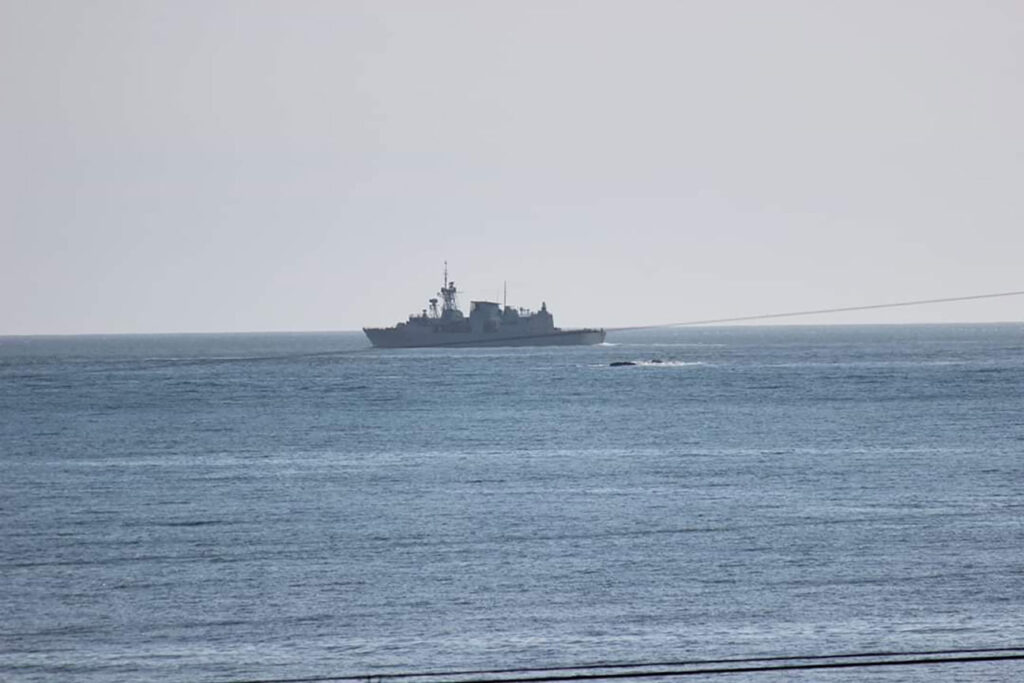The Royal Canadian Navy’s Halifax-class frigate, the Ville de Québec, left its home port in Halifax, Nova Scotia, to deploy to the Indo-Pacific in April 2025 in a voyage designed to increase collaboration with NATO allies. ROYAL CANADIAN NAVY
THE WATCH STAFF
A Royal Canadian Navy (RCN) Halifax-class frigate, the Ville de Québec, left its home port in Nova Scotia in April 2025 to deploy to the Indo-Pacific region where it will take part in Operation Horizon, an exercise designed to maintain open navigation of the seas. The ship departed April 7 for Operation Horizon, Canada’s forward-presence mission to the Indo-Pacific.
The Ville de Québec will rendezvous with European allies in the Atlantic Ocean before proceeding to the Indo-Pacific as part of the United Kingdom-led multinational Carrier Strike Group. “The complex security environment in the Indo-Pacific, with linkages to Arctic and Euro-Atlantic security, demands that the Canadian Armed Forces (CAF) remain an active and reliable partner that contributes to peace and security in the region,” a Canadian Ministry of National Defence news release stated.
Operation Horizon, according to the release, reflects Canada’s Indo-Pacific strategy by deploying more military forces to the region, participating in more multilateral exercises, and strengthening military-to-military cooperation. “This deployment further demonstrates the Canadian Armed Forces’ commitment to international peace and security efforts through operational excellence. Our ability to integrate seamlessly with our allies makes us a valued partner in maintaining global stability,” said Lt. Gen. Steve Boivin, commander of Canada’s Joint Operations Command.
The Ville de Québec, along with sister frigates in the Halifax class, are the go-to warships in the RCN fleet for international deployments. The dozen patrol frigates participate in multinational task forces like Combined Task Force 150 and NATO’s Standing Maritime Group 2. Their main purpose is to stop hostile nations and organizations from performing illegal activities, and when necessary, engage in combat, according to a CAF fact sheet. Armed with Harpoon and Sea Sparrow missiles, anti-submarine torpedoes and a 57 mm rapid-fire Mk3 naval artillery cannon, the ships have been the workhorses of the RCN since World War II.
The Ville de Québec, in service since 1994, replaced a decorated WWII warship. The ship’s crew of 225 Sailors can travel for up to 9,500 kilometers without refueling, according to the fact sheet. “For those serving in His Majesty’s Canadian Ship Ville de Québec, today’s departure has been well over a year in the making. The crew has worked incredibly hard to get the ship ready for Operation HORIZON, and to represent Canada and the Royal Canadian Navy globally — with some of the absolute finest people Canada and the Canadian Armed Forces has to offer. This incredible deployment would not be possible without the tremendous support of our families, the determination of the organizations ashore, and the resolve of the entire Royal Canadian Navy’s Atlantic Fleet. Without them, we would not have been able to get to where we are today,” said Cmdr. Peter MacNeil, the Ville de Québec’s commanding officer.
Since 2018, Canada’s strategy has called for three warships annually to visit the Indo-Pacific. The ongoing operations increase opportunities to work with allies and partners and enhance military cooperation, including port visits, the fact sheet stated. “With expanded opportunities to work side-by-side with Indo-Pacific allies and partners, the CAF is strengthening regional relationships through security cooperation, building military-to-military interoperability, and enhancing Canada’s role as a trusted international security partner,” a CAF fact sheet stated.

